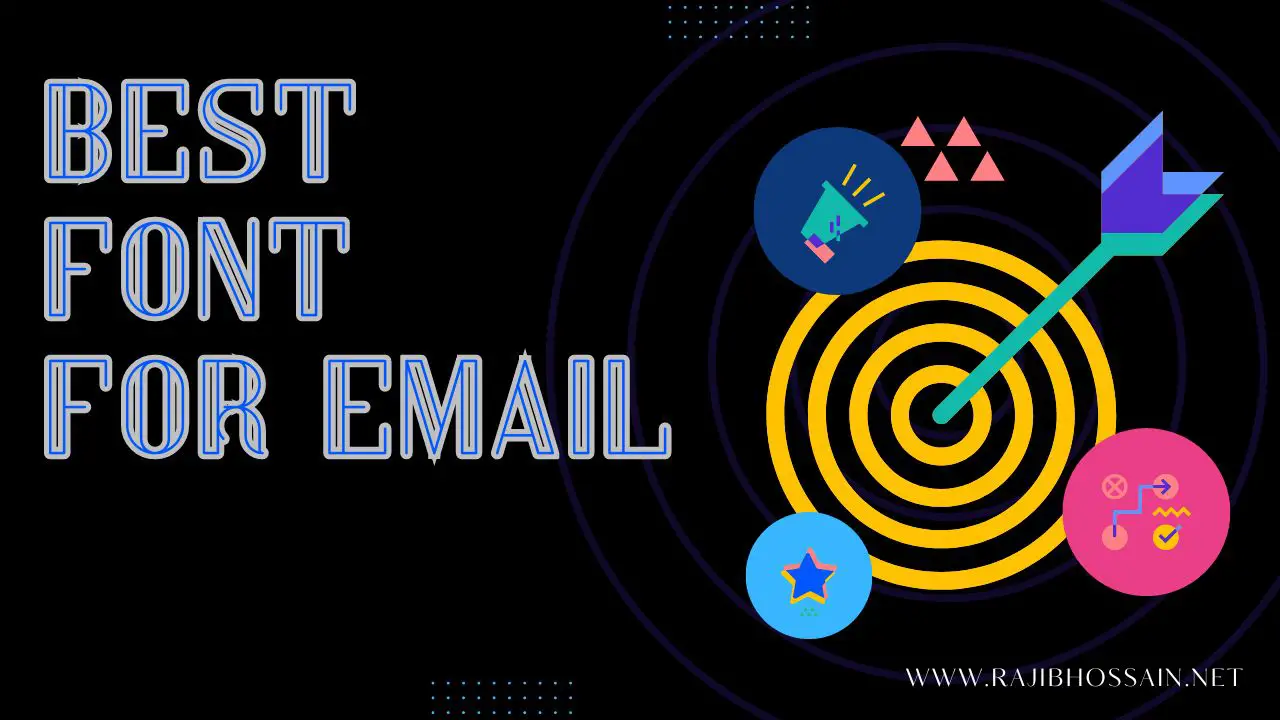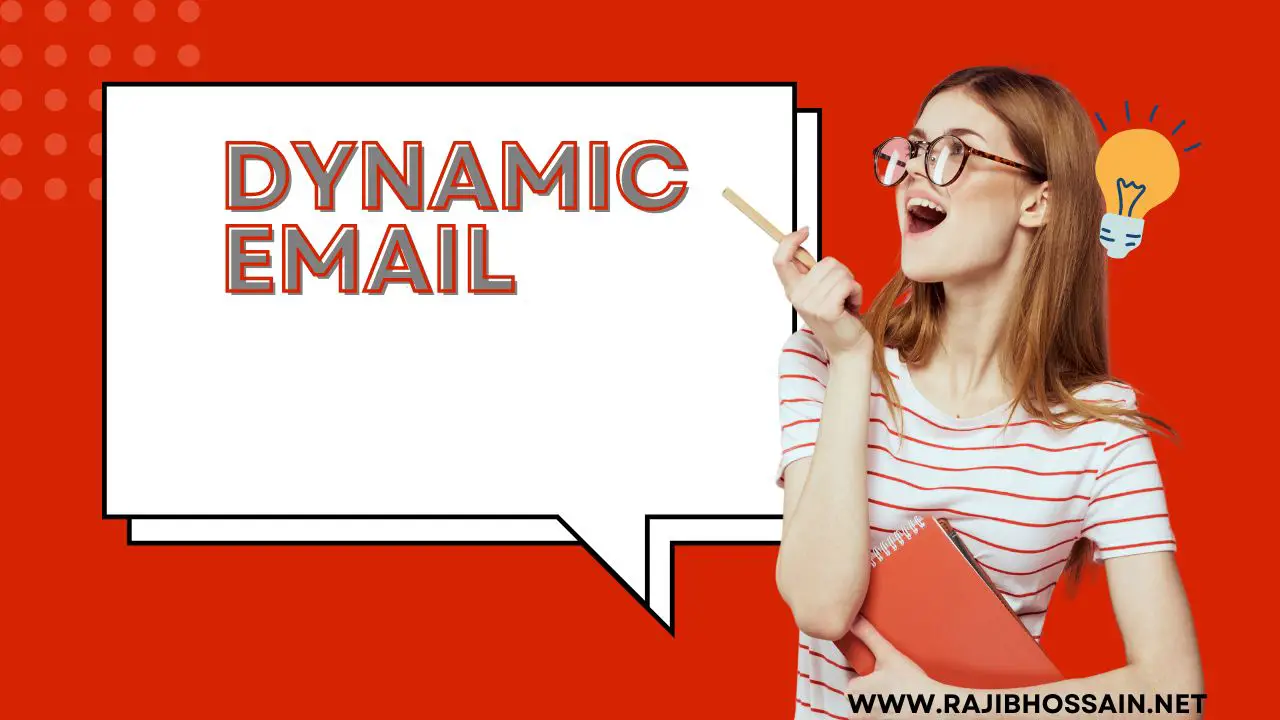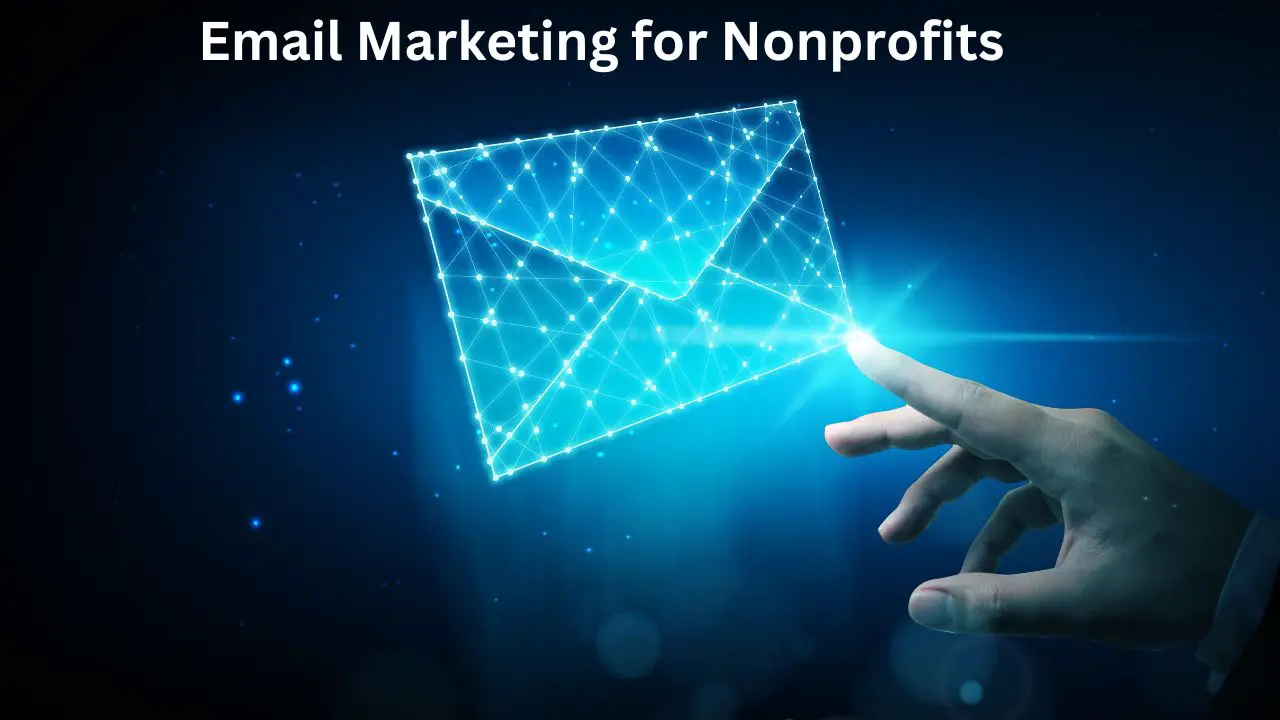There are various types of email marketing, including newsletters, promotional emails, and transactional emails. Each serves a unique purpose in engaging and converting subscribers.
Email marketing remains a powerful tool for businesses to connect with their audience. Newsletters keep subscribers informed about company updates and industry news. Promotional emails focus on driving sales through special offers and discounts. Transactional emails provide important information related to a customer’s activity, such as purchase confirmations and shipping notifications.
By understanding and utilizing these different types of email marketing, businesses can effectively reach their goals. Tailoring email content to the specific needs and behaviors of the target audience increases engagement and conversion rates. This strategic approach ensures that each email delivers value and fosters long-term customer relationships.
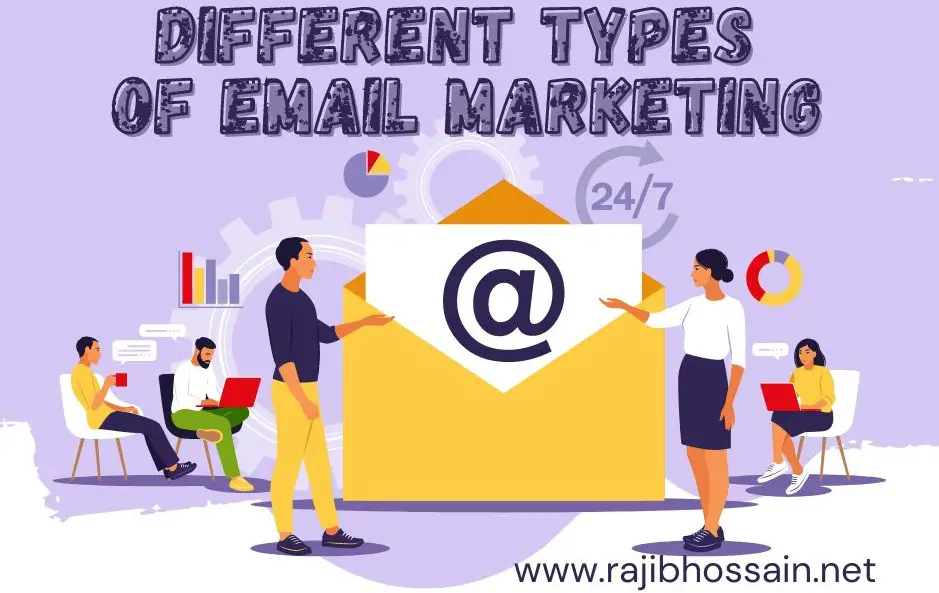
Introduction To Email Marketing
Email marketing is a powerful tool for businesses. It helps connect with customers directly in their inboxes. This form of marketing has evolved over time. Today, it is more effective than ever. In this blog post, we will explore different types of email marketing. We will also understand why it remains essential for businesses.
The Evolution Of Email As A Marketing Tool
In the early days, emails were simple. They were just text messages. Over time, emails became more sophisticated. They now include images, videos, and interactive elements. This evolution has made emails more engaging. Businesses can now create personalized emails. They can target specific groups of customers. This makes email marketing very effective.
Why Email Marketing Remains Essential
Email marketing is still crucial for businesses. It offers a high return on investment (ROI). According to studies, for every $1 spent, the average ROI is $42. Emails reach customers directly. This makes them more personal than social media posts.
- Emails are cost-effective.
- They can be personalized.
- Emails are measurable.
- They help build customer relationships.
Emails can be automated. This saves time and effort. Automation allows businesses to send timely messages. For example, welcome emails or birthday wishes. Automated emails improve customer engagement.
| Benefits | Description |
|---|---|
| High ROI | For every $1 spent, the ROI is $42. |
| Personalization | Emails can be tailored to individual customers. |
| Measurable | Businesses can track open rates, clicks, and conversions. |
| Automation | Send automated emails for special occasions. |
Email marketing is essential for building brand loyalty. Regular emails keep customers informed. They stay updated about new products and services. This creates a strong connection between the brand and the customer.
Transactional Emails
Transactional emails play a crucial role in email marketing. They are automated emails sent in response to user actions. These actions include purchases, password resets, and account confirmations. Unlike promotional emails, transactional emails provide important information. They have high open rates because they deliver valuable content to users.
Defining Transactional Emails
Transactional emails are triggered by user activities. They are not sent to a large audience. Instead, they target individual users based on specific actions. These emails deliver vital information related to the user’s interaction.
Common types of transactional emails include:
- Order confirmations
- Shipping notifications
- Password reset emails
- Account creation confirmations
- Payment receipts
These emails are essential for maintaining communication with users. They ensure users stay informed about their activities.
Best Practices For Maximizing Impact
To make the most of transactional emails, follow these best practices:
- Keep it simple and clear: Users need to understand the message easily. Use simple language and avoid jargon.
- Ensure timely delivery: Send the email immediately after the user action. This keeps the information relevant and fresh.
- Personalize the content: Use the user’s name and relevant details. Personalization makes the email more engaging.
- Include a clear call-to-action (CTA): Guide the user on the next steps. For example, provide a link to track their order.
- Optimize for mobile: Many users open emails on mobile devices. Ensure your email looks good on all screens.
| Action | Transactional Email |
|---|---|
| Make a purchase | Order confirmation |
| Request password reset | Password reset email |
| Create an account | Account confirmation |
| Make a payment | Payment receipt |
Transactional emails are vital for user communication. They provide important information and enhance user experience.
Direct Emails
Direct emails are a powerful tool in email marketing. They are sent to a targeted audience to promote products or services. These emails are often used for special announcements, offers, or updates.
The Role Of Direct Emails In Promotions
Direct emails play a crucial role in promotions. They allow businesses to reach specific customers with personalized messages. This helps in creating a direct connection with the audience.
Using direct emails, companies can inform customers about new products, sales, or events. This keeps the audience engaged and interested. Direct emails can also drive traffic to websites and boost sales.
Crafting Compelling Direct Email Content
Creating effective direct emails requires attention to detail. The subject line should grab the reader’s attention. It should be short and to the point.
The email content should be clear and concise. Use simple language and short sentences. Highlight the key message early in the email.
Here are some tips for crafting compelling direct email content:
- Personalize the email: Use the recipient’s name and customize the message.
- Use a strong call-to-action (CTA): Encourage the reader to take action, such as clicking a link or making a purchase.
- Include visuals: Use images or videos to make the email more engaging.
- Keep it mobile-friendly: Ensure the email looks good on mobile devices.
By following these tips, you can create direct emails that capture attention and drive results.
Email Newsletters
Email newsletters are a popular type of email marketing. They help businesses stay connected with their audience. These emails often include updates, news, and valuable content. Newsletters keep readers informed and engaged.
Building Relationships Through Newsletters
Newsletters build strong relationships with readers. They provide valuable information. This keeps the audience interested. Consistent communication creates trust. People appreciate regular updates. This helps in forming a loyal audience base.
Frequency And Content Strategies For Newsletters
Choosing the right frequency is important. Too many emails can annoy readers. Too few can make them forget your brand. Finding a balance is key.
Here are some strategies:
- Weekly: Ideal for brands with regular updates.
- Bi-weekly: Good for in-depth content.
- Monthly: Suitable for long newsletters.
Content should be diverse and engaging. Include different types of content to keep it interesting:
| Type of Content | Description |
|---|---|
| Blog Posts | Links to recent articles or posts. |
| Product Updates | Information about new products or features. |
| Tips and Tricks | Helpful advice related to your industry. |
| Customer Stories | Success stories from your customers. |
| Upcoming Events | Details about events or webinars. |
Use these strategies to create effective newsletters. Keep content fresh and engaging. This ensures readers look forward to your emails.
Welcome Email Series
Email marketing is a powerful tool to connect with your audience. One effective type is the Welcome Email Series. This series sets the tone for your relationship with new subscribers.
Creating A Memorable First Impression
First impressions are crucial in email marketing. Your welcome email is the first touchpoint with your new subscriber. It should be warm and inviting.
Start with a friendly greeting. Use the subscriber’s name if you can. Introduce your brand with a brief story. Highlight what makes your brand unique.
Include a clear call-to-action (CTA). Guide the subscriber to the next step. This could be visiting your website or following you on social media.
Key Elements Of An Effective Welcome Series
A successful welcome series includes several key elements. These elements ensure your emails are engaging and effective.
| Element | Description |
|---|---|
| Personalization | Use the subscriber’s name and tailor content to their preferences. |
| Value Proposition | Clearly state what value you offer. Why should they stay subscribed? |
| Engaging Content | Include useful information, tips, or special offers. |
| Clear CTA | Encourage the subscriber to take a specific action. |
Personalization is key. Address subscribers by name. Tailor content to their interests.
Your value proposition is crucial. Explain why they should stay subscribed. What benefits will they get?
Content should be engaging. Share useful tips or special offers. Make the subscriber feel valued.
Always include a clear CTA. Guide the subscriber to take the next step. This keeps them engaged and connected with your brand.
Lead Nurturing Emails
Lead nurturing emails guide prospects through the sales journey. They build relationships and trust. These emails provide valuable information at each stage.
Guiding Prospects Along The Sales Funnel
Lead nurturing emails help move prospects through the sales funnel. They address specific needs at each stage. Early-stage emails educate and inform. Mid-stage emails build trust. Late-stage emails push for a decision.
- Early Stage: Share educational content and blog posts.
- Mid Stage: Offer case studies and webinars.
- Late Stage: Provide product demos and free trials.
This method keeps prospects engaged and informed. It increases the chance of conversion.
Personalization And Timing In Nurturing Campaigns
Personalization makes lead nurturing emails more effective. Use the recipient’s name and tailor content to their interests. Segment your audience based on behavior and demographics.
Timing is crucial in nurturing campaigns. Send emails based on user actions. For example, send a follow-up email after a webinar. Use automated workflows to ensure timely delivery.
| Action | Triggered Email |
|---|---|
| Download eBook | Thank you email with more resources |
| Webinar Sign-up | Reminder email before the event |
| Product Demo Request | Follow-up email with next steps |
Personalization and timing enhance the user experience. They lead to higher engagement and better results.
Re-engagement Emails
Re-engagement emails target subscribers who have stopped interacting with your emails. These emails aim to rekindle their interest in your content. They are crucial for maintaining a healthy email list. By re-engaging inactive subscribers, you can boost your email marketing performance.
Strategies To Win Back Inactive Subscribers
To win back inactive subscribers, use various strategies. Personalized content can make a big difference. Address the subscriber by name. Tailor the content to their past behavior. Offer special incentives like discounts or exclusive deals.
Another effective strategy is to ask for feedback. Send a short survey to understand why they stopped engaging. Use this feedback to improve your content.
Segment your email list based on activity levels. Send targeted re-engagement emails to the inactive segment. This makes your efforts more efficient.
| Strategy | Description |
|---|---|
| Personalized Content | Address by name, tailor to past behavior |
| Special Incentives | Offer discounts or exclusive deals |
| Feedback Survey | Understand reasons for disengagement |
| Segmented Emails | Target emails to inactive subscribers |
Analyzing The Success Of Re-engagement Efforts
To measure the success of re-engagement emails, track key metrics. Open rates and click-through rates are essential. High rates indicate effective subject lines and content.
Look at the conversion rate. This shows how many re-engaged subscribers take action. Actions include purchases or signing up for an event.
Monitor unsubscribe rates as well. A high unsubscribe rate could indicate irrelevant content. Use A/B testing to compare different email versions. This helps identify what works best.
- Open Rates: Indicates interest in subject lines
- Click-Through Rates: Measures engagement with content
- Conversion Rates: Shows successful re-engagement
- Unsubscribe Rates: Indicates content relevance
By focusing on these metrics, you can refine your re-engagement strategies. This will help you keep your email list active and engaged.
Behavioral Trigger Emails
Behavioral trigger emails are powerful tools in email marketing. They send emails based on customer actions. These actions can include purchases, site visits, or cart abandonments. Behavioral triggers help create personalized messages. This increases engagement and conversion rates.
Leveraging Customer Actions For Personalized Messaging
Customers want relevant messages. Behavioral triggers make this possible. Emails sent after specific actions feel personal. This builds trust and loyalty. It also boosts sales and brand awareness. Here are some key benefits:
- Relevance: Messages are timely and relevant.
- Engagement: Customers are more likely to engage.
- Conversions: Personalized emails drive higher conversions.
- Customer Loyalty: Builds stronger relationships.
Examples Of Effective Behavioral Triggers
| Trigger | Description | Example Email |
|---|---|---|
| Welcome Email | Sent when a user signs up | Thank you for joining us! |
| Cart Abandonment | Sent when a cart is abandoned | You left items in your cart! |
| Purchase Confirmation | Sent after a purchase is made | Your order is confirmed! |
| Re-Engagement | Sent to inactive users | We miss you! Come back. |
Using these triggers can transform your email marketing. It makes your emails more effective and engaging. Start using behavioral trigger emails today!
Mobile Optimization In Email Campaigns
Mobile devices are everywhere. Many people check emails on their phones. So, optimizing emails for mobile is crucial. It ensures your message is clear and readable. Let’s explore the importance of mobile-friendly emails. We will also look at design and layout tips for mobile devices.
The Importance Of Mobile-friendly Emails
Mobile-friendly emails boost engagement. People read emails on small screens. If an email is hard to read, they delete it. This affects your campaign. A mobile-friendly email keeps readers interested. It improves click-through rates. It also enhances user experience. A good mobile experience builds trust with your audience.
Design And Layout Considerations For Mobile Devices
Designing for mobile devices needs special care. Follow these tips to make your emails look great on phones:
- Use Single Column Layout: Single columns fit better on small screens.
- Large Font Sizes: Use at least 14px font size. It ensures readability.
- Touch-Friendly Buttons: Make buttons at least 44px by 44px. They should be easy to tap.
- Short Subject Lines: Keep subject lines under 50 characters. Mobile screens cut off long text.
Here is a table for quick design tips:
| Element | Mobile Optimization Tip |
|---|---|
| Layout | Single Column |
| Font Size | At least 14px |
| Buttons | 44px by 44px |
| Subject Line | Under 50 characters |
By following these tips, your emails will look great on any device. Your readers will appreciate the effort. They will stay engaged and respond to your campaigns.
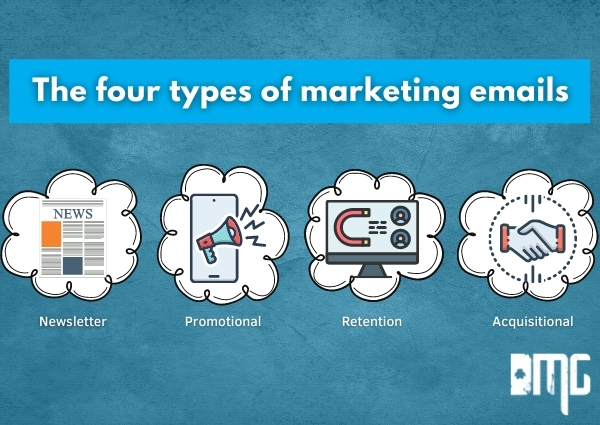
Measuring Email Marketing Success
Measuring email marketing success is crucial for improving your campaigns. You need to track the right metrics and refine strategies. This helps you reach your marketing goals effectively.
Key Metrics To Track Campaign Performance
Tracking key metrics gives you insights into your email performance. Here are some important metrics to monitor:
- Open Rate: The percentage of emails opened by recipients.
- Click-Through Rate (CTR): The ratio of users who clicked on a link.
- Bounce Rate: The percentage of emails that couldn’t be delivered.
- Conversion Rate: The percentage of users who completed a desired action.
- Unsubscribe Rate: The percentage of users who opted out of your list.
These metrics help you understand how your emails are performing. They also highlight areas for improvement.
Using Analytics To Refine Email Strategies
Analytics tools can provide detailed insights into your email campaigns. Use these tools to refine your email strategies:
- A/B Testing: Test different subject lines, content, and send times.
- Segmentation: Group your audience based on interests and behavior.
- Personalization: Use recipient names and tailored content.
- Timing: Send emails when your audience is most active.
- Content Quality: Ensure your content is engaging and valuable.
Use these strategies to improve engagement and conversions. Analytics help you make informed decisions for better results.
| Metric | Description |
|---|---|
| Open Rate | Percentage of opened emails |
| CTR | Ratio of clicked links |
| Bounce Rate | Percentage of undelivered emails |
| Conversion Rate | Percentage of completed actions |
| Unsubscribe Rate | Percentage of opt-outs |
Regularly check these metrics to keep your email campaigns on track. Use analytics to find what works best for your audience.
Conclusion: Future Of Email Marketing
Email marketing has evolved significantly over the years. It remains a powerful tool for businesses. The future of email marketing looks promising and exciting. New trends and technologies will shape its future. Marketers must stay updated to harness its full potential. Let’s explore the emerging trends and how to stay ahead in the digital landscape.
Emerging Trends In Email Marketing
Several trends are shaping the future of email marketing. Here are the key trends:
- Personalization: Emails tailored to individual preferences and behavior.
- Interactive Emails: Emails with interactive content like polls and quizzes.
- AI and Automation: Use of AI for smart automation and better targeting.
- Mobile Optimization: Emails designed for mobile devices first.
- Data Privacy: Increased focus on data privacy and security.
These trends will drive the future of email marketing. Businesses should adapt to these changes to stay relevant.
Staying Ahead In The Evolving Digital Landscape
To stay ahead, marketers must embrace new strategies. Here are some tips:
- Invest in Technology: Use advanced email marketing tools and platforms.
- Focus on Content: Create engaging and valuable content for your audience.
- Analyze Data: Regularly analyze email campaign data to improve performance.
- Test and Optimize: Continuously test and optimize your email campaigns.
- Learn and Adapt: Stay updated with the latest trends and adapt accordingly.
By following these tips, businesses can stay ahead. The digital landscape is constantly evolving. Staying proactive is key to success.
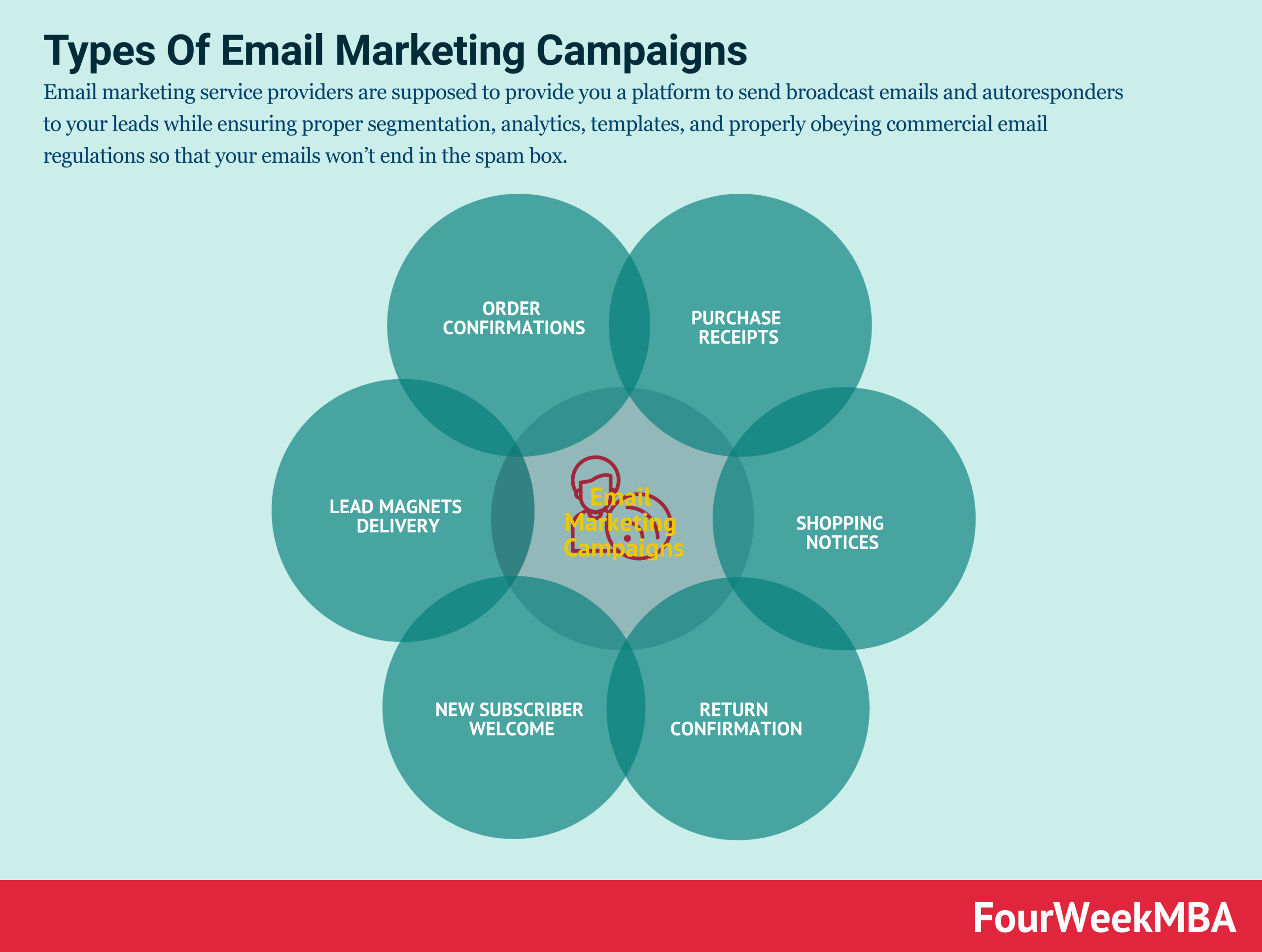
Frequently Asked Questions
What Are The 4 Types Of Email Marketing?
The four types of email marketing are: 1. Promotional Emails: Focus on sales and special offers. 2. Informational Emails: Share news, updates, or blogs. 3. Transactional Emails: Confirm actions like purchases or sign-ups. 4. Lifecycle Emails: Target specific stages in the customer journey.
What Are The 7 Email Marketing Strategies?
1. Personalize your emails. 2. Segment your audience. 3. Craft compelling subject lines. 4. Optimize for mobile devices. 5. Use clear calls-to-action. 6. Automate email campaigns. 7. Analyze and adjust based on performance metrics.
What Is The Most Common Form Of Email Marketing?
The most common form of email marketing is the promotional email. These emails highlight special offers, discounts, and sales. They aim to drive immediate action from recipients.
What Are The 5 Ts Of Email Marketing?
The 5 Ts of email marketing are Targeting, Timing, Testing, Tracking, and Trust. Target the right audience. Send emails at optimal times. Test different elements. Track performance metrics. Build trust with your subscribers.
What Are The 4 Ps Of Email Marketing?
The 4 Ps of email marketing are Personalization, Persuasion, Proof, and Performance. Personalization tailors content to recipients. Persuasion uses compelling calls-to-action. Proof includes testimonials or reviews. Performance tracks metrics and results.
Conclusion
Mastering different types of email marketing can significantly boost your business growth. From newsletters to transactional emails, each type has its unique benefits. By leveraging these strategies, you can enhance customer engagement and drive more conversions. Stay consistent, analyze results, and adapt to your audience’s needs for optimal success.

